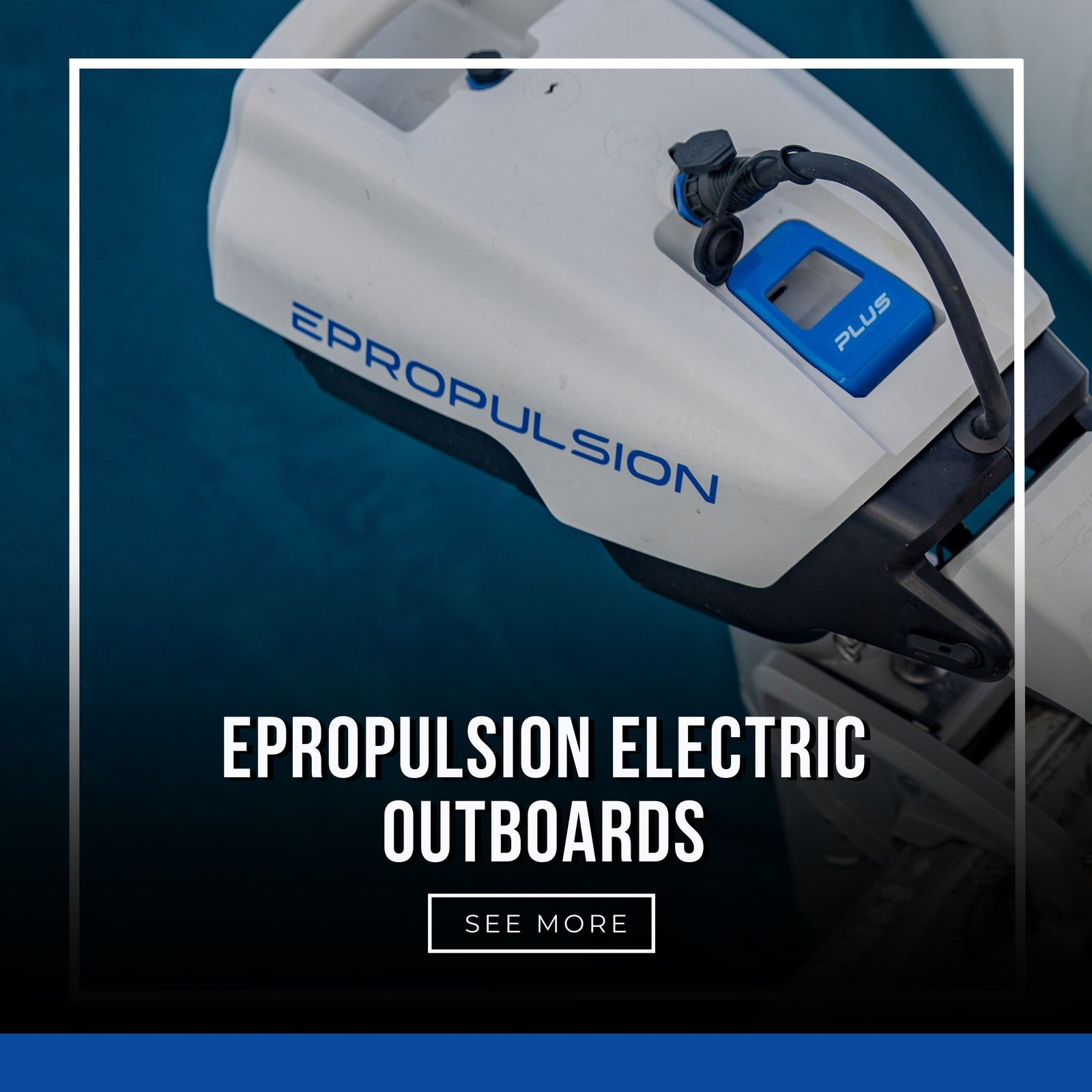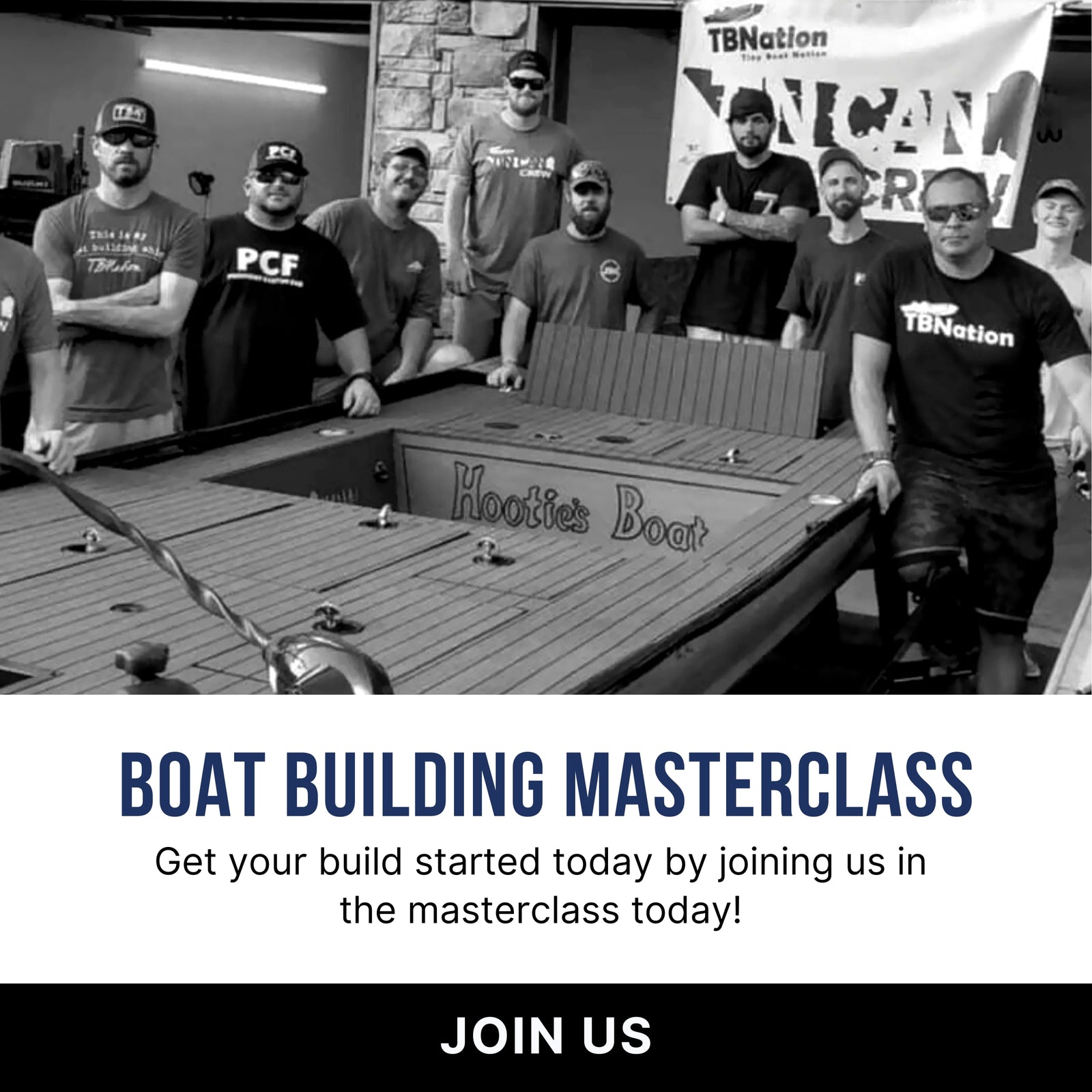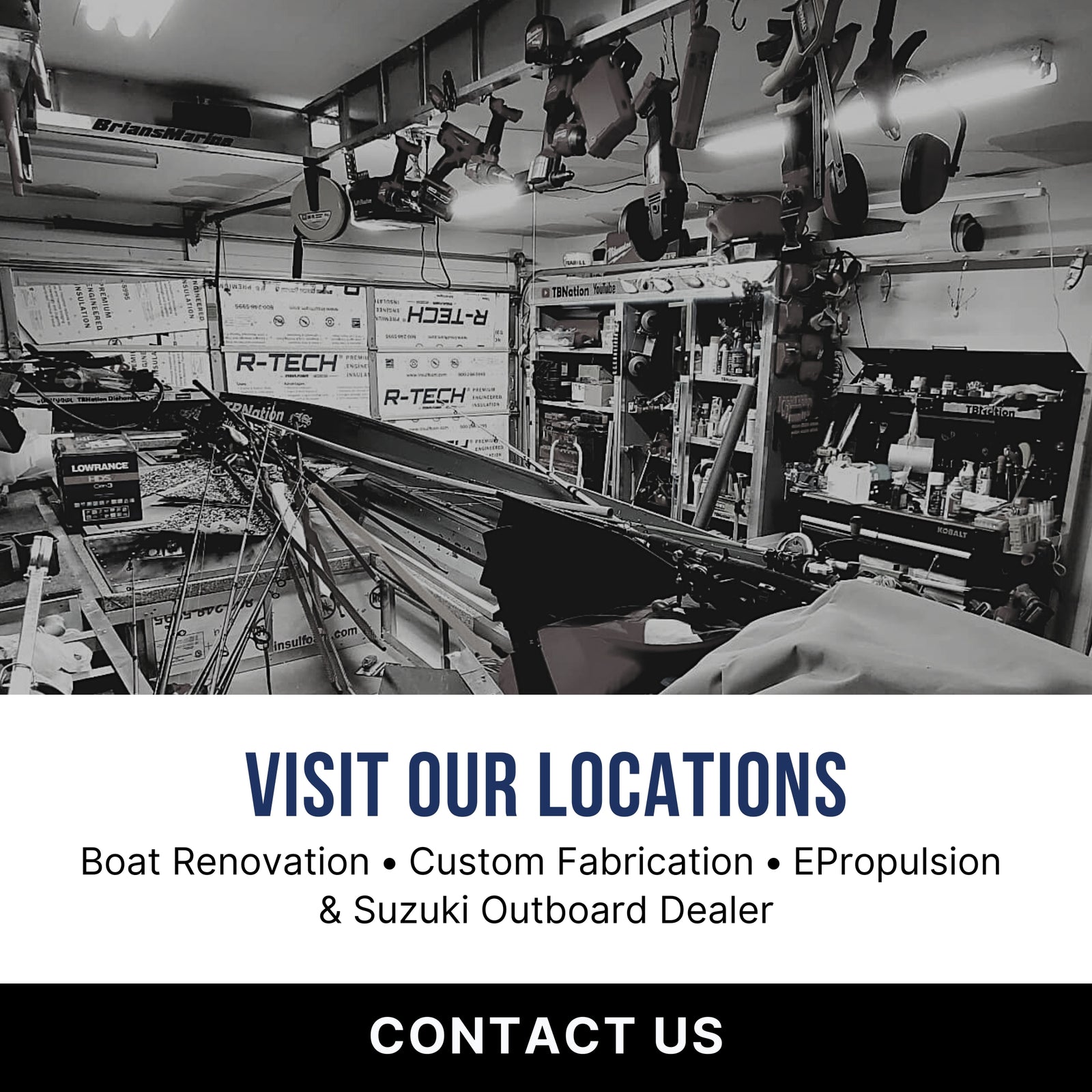Your Cart is Empty
Please select the article in settings
The Evolution of Wooden Jon Boat Conversions: A Journey with Tiny Boat Nation
Tiny Boat Nation stands as a beacon for the DIY boat-building community, illustrating the remarkable journey from simple beginnings with wooden Jon boats to the cutting-edge use of aluminum in boat construction. This transformation highlights the community's ability to innovate and push the boundaries of traditional boat-building techniques, embracing new materials and methods to enhance durability and performance.
The transition from wood to aluminum not only marks a technological leap but also reflects the spirit of DIY enthusiasts who are committed to learning, experimenting, and sharing their knowledge. Tiny Boat Nation's story is one of inspiration, showing how passion and perseverance can lead to significant advancements in a craft, encouraging others to embark on their own projects and explore the possibilities within the realm of boat building.
The Genesis of Wooden Boat Conversions
Overcoming Initial Challenges
The journey into boat building often starts with the simplicity and accessibility of working with wood, particularly for those who find the prospect of metalwork intimidating. Wooden decks serve as an ideal entry point, offering a hands-on experience that is both forgiving and rewarding. This approach allows enthusiasts to develop their skills at their own pace, laying a solid foundation in the basics of boat construction and design.
As builders gain confidence and expertise, the initial focus on wooden decks often sparks a curiosity and ambition to explore more complex materials and techniques, such as metalwork. This natural progression from wood to more challenging materials embodies the essence of the DIY spirit — a combination of learning, innovation, and the continuous pursuit of personal growth and craftsmanship in the art of boat building.
The Role of Wooden Decks
Wooden decks have played a crucial role in the world of DIY boat building, acting as the initial platform for many aspiring builders to test their ideas, make mistakes, and learn from them. This stage of experimentation with wood allowed enthusiasts to understand the fundamentals of boat design and conversion, providing a tangible way to see their visions come to life. The hands-on experience gained from working with wooden decks is invaluable, fostering a sense of accomplishment and the confidence to tackle more complex projects.
The importance of this phase extends beyond individual growth, contributing significantly to the broader community of boat builders. Sharing experiences, successes, and failures around wooden deck projects has helped create a supportive and collaborative environment. This collective learning process has been instrumental in advancing the craft, encouraging innovation, and elevating the overall skill level within the community. Through this shared journey, wooden decks have become more than just a starting point; they've been the foundation upon which the art and science of boat conversion have been built and refined.

Transitioning to Aluminum: The Gen X System
The Introduction of Gen X
As the DIY boat-building community evolved and grew more sophisticated, there emerged a groundbreaking innovation known as the Gen X system. This system revolutionized the way aluminum decks and frames are constructed, eliminating the need for welding, which had previously been a barrier for many hobbyists.
The introduction of the Gen X system opened up new possibilities for builders, making the process more accessible and inviting for those who may not have the skills or equipment for traditional metalwork. This advancement significantly broadened the scope of what could be achieved in DIY boat conversions, allowing for more complex and durable designs.
The development of the Gen X system represents a milestone in the journey of the DIY boat-building community, reflecting its collective desire to push boundaries and explore new methodologies. It not only simplifies the construction process but also encourages a wider range of enthusiasts to participate in boat building, democratizing the craft.
By providing an alternative to welding, the Gen X system has paved the way for innovative designs and has fostered a spirit of creativity and experimentation. This leap forward in boat conversion techniques highlights the community's ongoing commitment to improvement, collaboration, and the sharing of knowledge.
Aluminum Over Wood
The shift towards using advanced materials and techniques in boat building, particularly the move from traditional wooden structures to aluminum, has ushered in a host of benefits that have transformed the industry. Among these advantages, the increased durability and lighter weight of aluminum stand out, offering boat builders the chance to craft vessels that not only last longer but are also easier to handle and transport.
This transition signifies a significant evolution in boat construction, enabling enthusiasts and professionals alike to design and build boats that meet specific needs and preferences with greater ease.
Furthermore, the advent of aluminum in the construction of custom Bass boats has opened up unparalleled customization options for builders. This material allows for a level of precision and flexibility in design that was previously difficult to achieve with wood alone.
As a result, individuals looking to create their own personalized Bass boats can now tailor every aspect of their vessel, from its size and shape to its performance characteristics. This leap forward in boat-building technology has made the dream of owning a custom Bass boat more attainable than ever, marking a new chapter in the rich history of maritime craftsmanship.
The Significance of Wooden Boats in the DIY Community
Fostering Creativity and Skills
Wooden boat projects have long been revered as the quintessential starting point for burgeoning boat builders, offering a blank canvas upon which they can unleash their creativity and ingenuity. Through the process of shaping, assembling, and finishing wood, enthusiasts gain invaluable fabrication skills that are fundamental to the craft.
This hands-on experience with wood not only nurtures a builder's technical abilities but also stimulates their artistic vision, allowing them to experiment with design elements in a way that more rigid materials do not permit. As such, wooden boat projects have been instrumental in laying the groundwork for individuals to advance to more sophisticated and challenging endeavors.
Beyond their role in skill development, wooden boat projects have played a pivotal role in the growth and evolution of the DIY boat-building community. These projects serve as a common thread that binds the community, providing a shared experience for discussion, learning, and inspiration. The challenges and triumphs encountered in wooden boat building foster a collaborative spirit among builders, encouraging the exchange of ideas and solutions.
As builders progress from these foundational projects, they carry forward the lessons learned and the sense of camaraderie, contributing to the collective knowledge and advancement of the community. This evolutionary journey from simple wooden boats to complex constructions reflects the dynamic and evolving nature of boat building as an art and science.

The Legacy of Wooden Boats
The transition from wooden to aluminum boats within the DIY community is a testament to the relentless pursuit of innovation and improvement. This shift represents more than just a change in materials; it symbolizes the essence of the DIY spirit, where limitations are not seen as barriers but as catalysts for creativity and advancement.
Wooden boats, with their rich history and craftsmanship, have laid the foundational skills necessary for boat builders. However, the inherent limitations of wood, such as susceptibility to rot and the extensive maintenance required, prompted the search for more durable and versatile materials, leading to the adoption of aluminum.
Aluminum boats bring forth a new era of boat building, offering unparalleled durability, lighter weight, and reduced maintenance compared to their wooden counterparts. This progression to aluminum not only showcases the technical mastery achieved by DIY enthusiasts but also highlights their willingness to embrace change and explore new possibilities.
The ability to overcome the challenges presented by wooden boat construction and venture into the use of modern materials like aluminum exemplifies the innovative spirit that drives the DIY community. Through this evolution, boat builders have expanded their capabilities, opening up a realm of new opportunities for custom boat creation and design.
Recognizing the Limitations and Celebrating the Journey
Understanding Constraints
Recognizing the inherent limitations of wooden boats marked a pivotal moment in the evolution of boat building, setting the stage for the shift toward aluminum. Wooden boats, while cherished for their traditional aesthetic and craftsmanship, presented challenges in terms of durability, weight, and the ongoing maintenance required to preserve their integrity.
These issues prompted builders to seek out alternative materials that could offer improved performance and longevity without compromising on the quality of the build. The acknowledgment of these limitations was not seen as a setback but rather as an opportunity to innovate and enhance the boat-building process.
The transition to aluminum addressed many of the concerns associated with wooden boats, offering a solution that was both lightweight and highly durable. Aluminum boats are resistant to the elements, reducing the need for frequent repairs and maintenance, and their lighter weight makes them easier to transport and maneuver. This shift towards aluminum reflects a broader trend in the DIY community towards embracing new technologies and materials that can provide better outcomes for builders and users alike.
By confronting the limitations of wooden boats head-on, the boat-building community has opened up new possibilities for design and functionality, ensuring the craft continues to evolve and adapt to the needs of modern builders and enthusiasts.
The Importance of Evolution
This narrative highlights the critical role of evolution in the realm of DIY projects, underscoring the importance of continuous learning, growth, and the drive for enhancement. It serves as a beacon of inspiration for future builders, encouraging them to embrace the journey of self-improvement and innovation within their crafts.
The story is a testament to the idea that progress, no matter how small, contributes significantly to the overall development of individual skills and the broader DIY community. It celebrates the successes and challenges faced by builders, acknowledging that each step forward is a step towards mastering their art.
Furthermore, this evolution in DIY projects is not just about the technical skills gained or the projects completed; it's about the mindset it fosters among enthusiasts. It instills a belief in the possibility of transcending traditional boundaries and exploring uncharted territories with creativity and determination.
This story motivates future builders to view limitations not as obstacles but as opportunities to innovate and excel. It champions the spirit of curiosity and resilience, essential qualities for anyone looking to make their mark in the DIY world. Through this narrative, the journey of learning and growth becomes a source of inspiration, urging individuals to aim higher and dream bigger in their endeavors.
Conclusion
The story of Tiny Boat Nation, transitioning from simple wooden Jon boat projects to the advanced realm of aluminum construction, perfectly encapsulates what drives the DIY community: a relentless pursuit of growth, innovation, and making a meaningful impact. This evolution is not just about changing materials but represents a deeper journey of learning, experimenting, and pushing beyond conventional boundaries.
It serves as a powerful source of motivation for aspiring builders, inviting them to take bold steps in their own projects, whether it's creating a bespoke Bass boat or undertaking another unique venture.
This shift from wood to aluminum is more than a technical advancement; it symbolizes the potential that lies within the grasp of those who are committed to their craft. It demonstrates that with the right mix of creativity, dedication, and curiosity, remarkable transformations are possible.
The journey of Tiny Boat Nation highlights the essence of the DIY ethos: the belief that anyone, with enough passion and perseverance, can bring their visionary ideas to life. It's a reminder that the path from traditional techniques to innovative solutions is paved with the efforts of those willing to challenge the status quo and explore the breadth of their capabilities.
Join Our VIP List
Join the Tiny Boat Nation VIP Members List.
It's Free! Stay Up To Date With Announcements, Product Give Aways, News and Promotions.









